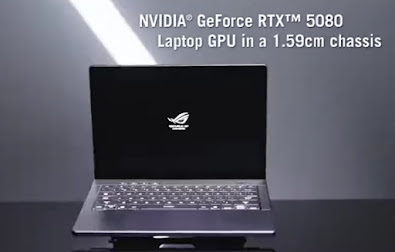The ASUS ROG Zephyrus G14 has emerged as a standout contender in the global gaming laptop market, redefining expectations for compact, high-performance machines. Launched as a bold fusion of portability, power, and aesthetic innovation, the G14 has captured the attention of gamers, content creators, and professionals worldwide, contributing significantly to ASUS’s competitive positioning in the $150 billion global PC market. With a 7% market share in 2023, ASUS has leveraged the G14’s unique attributes to challenge industry giants like Dell’s Alienware, HP’s Omen, and Lenovo’s Legion, particularly in key regions such as North America, Europe, and Asia-Pacific.
At the heart of the G14’s global appeal is its 14-inch chassis, which defies the traditional bulk of gaming laptops. Powered by AMD Ryzen 9 processors and NVIDIA GeForce RTX 4060 or 4070 GPUs, it delivers desktop-grade performance for AAA gaming titles and demanding creative workloads like video editing and 3D rendering. The laptop’s QHD+ ROG Nebula OLED display, with a 120Hz refresh rate and vibrant color accuracy, has resonated strongly with markets prioritizing visual fidelity, such as Japan and South Korea, where OLED adoption is surging. Additionally, the optional AniMe Matrix LED lid, allowing customizable pixel art, has become a cultural hit among younger demographics, particularly in urban centers like Tokyo, London, and New York, where personal expression drives tech purchases.
The G14’s global success is underpinned by its strategic pricing, ranging from $1,149 for base models to $2,964 for premium configurations. This flexibility has made it accessible to diverse income segments, from budget-conscious students in India to affluent professionals in the U.S. In 2024, ASUS reported a 12% year-over-year sales increase for the G14 in North America, driven by aggressive marketing and partnerships with esports events. Europe, particularly Germany and the UK, has also embraced the G14 for its exceptional battery life—up to 10 hours—uncommon in gaming laptops, catering to hybrid work-from-home and gaming lifestyles post-pandemic.
However, the G14’s global journey faces challenges. In Southeast Asia, supply chain disruptions and import tariffs have inflated prices, limiting penetration in price-sensitive markets like Indonesia and the Philippines. Competitors like MSI, with lower-cost alternatives, have capitalized on this gap. Moreover, while the G14’s lightweight 1.72kg design is a universal draw, some markets, such as China, demand larger screens, prompting ASUS to introduce 16-inch variants to complement the G14 lineup. Currency fluctuations and regional economic disparities further complicate pricing strategies, with the G14 costing 20% more in Brazil than in the U.S. due to taxes.
Looking ahead, ASUS is poised to sustain the G14’s momentum by integrating AI-driven features, such as performance optimization, aligning with the global trend toward smart devices. Expanding distribution channels in emerging markets like Africa and Latin America, where gaming culture is growing, could further boost its 15% projected growth in 2025. By addressing regional pricing hurdles and enhancing localized marketing, the ROG Zephyrus G14 is well-positioned to remain a global benchmark for compact gaming excellence, blending innovation with accessibility in a fiercely competitive landscape.




